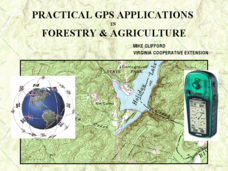Curated OER
Are Our Chemical Measurements Accurate or Precise?
What is the difference between accuracy and precision? This instructional activity has students define the terms accuracy and precision, and compare bulleye diagrams to find examples of both. Students analyze given data and determine the...
Curated OER
Measurements and Their Uncertainty
In this measurements worksheet, students fill in 10 blanks, determine if statements are true or false, match 6 terms with the appropriate definitions, and solve 2 problems. Topics include converting to scientific notation, identifying...
Curated OER
Precision and Accuracy in Measurement
In this Algebra I activity, students differentiate between precision and accuracy is measurement. The four page activity contains thirty-five problems. Answers are not included.
Curated OER
Unit 0 Review - Measurement Lab Equipment
Review questions like these can be used in your biology, chemistry, physics, or earth science classes! They assess scientists' understanding of laboratory measurement tools including graduated cylinders, thermometers, and balances. They...
Curated OER
What Can We Measure About Chemicals?
In this measurement worksheet, learners read about accuracy of measurements as compared to the precision of measurements. Students answer four precision problems and solve four accuracy problems.
Illustrative Mathematics
Running Around a Track I
The accuracy required by the design and measurement of an Olympic running track will surprise track stars and couch potatoes alike. Given a short introduction, the class then scaffolds into a detailed analysis of the exact nature of the...
Curated OER
What Can We Measure about Chemicals?
For this measuring chemicals worksheet, students determine the accuracy and precision of measurements and distinguish between the two. They find the percent composition of compounds, the molar mass of compounds and the volume of gases at...
JSplash Apps
Music Tutor (Sight Reading Improver)
Elegant in its simplicity, this app accomplishes precisely what it sets out to do: improving the user's sight reading of musical notes. Taking the concept of flashcards to the next level, the designers also add in the element of sound so...
Curated OER
Computer Accuracy
Students work together on computers to practice measuring for navigation. They discover that errors in their calculations can lead them in the wrong direction. They examine the need of computers by engineers.
Curated OER
What Can We Measure About Chemicals?
In this measuring chemicals worksheet, students investigate measurements of an aluminum slab including the length, width, height, mass, volume and density. They do the same for a piece of aluminum foil and they compare their results....
Curated OER
Scientific Data: It's Not as Pretty as It Looks!
The difference between accuracy and precision is fundamental for high school science learners. Using test kits for nitrate concentration in water, they compare readings with each other. They consider the accuracy, precision, and bias of...
Santa Monica College
Introducing Measurements in the Laboratory
We use basic units of measurement to break down things and communicate clearly. The first lesson in an 11-part series teaches the proper way to measure various items. It starts simply with measuring the dimensions and areas of geometric...
Curated OER
Precise Diode Circuits
In this electrical circuit instructional activity, students construct a model of a diode circuit to demonstrate understanding. They analyze schematics and answer a series of 13 open-ended questions about diode circuits. This...
Normal Community High School
Scientific Measurement
Pupils learn everything from how to take scientific measurements, to accuracy/precision, to density and a plethora of topics from a presentation on the metric system.
Curated OER
Math: Checking Scale Drawings for Accuracy
Students critique their own drawings for accuracy and make constructive suggestions prior to reworking them. They discover how scale in maps and drawing relate to relative size and distance. In addition, students comprehend the...
Curated OER
Practical GPS Applications in Forestry & Agriculture
An explanation of the Global Positioning System (GPS) and the Geographic Information System (GIS) is given in this presentation. Uses and applications are considered. How it works and sources of error are also touched upon. A large...
Curated OER
DC Metrology
In this physics worksheet, students complete 11 short answer questions related to general metrology. They define basic metrological terms.
Curated OER
Getting it Right!
Students investigate error. As shown in earlier activities from navigation lessons 1 through 3, without an understanding of how errors can affect position, one cannot navigate well. Students explore how computers can help in navigation....
Curated OER
Data Collection Review Sheet
In this data collection worksheet, students determine the number of significant figures in the given values, describe the difference between accuracy and precision, and calculate density and mass. This worksheet has 1 short answer...
Curated OER
Numerical Analysis/ Floating Point Arithmetic
For this math worksheet, students examine the concept of floating point arithmetic. They compare the tools of chopping and rounding to measure accuracy.
Curated OER
BASEBALL HOME RUN
Students determine whether a hit baseball is a home run or not by utilizing parametric equations to describe the path of the ball. They assess the importance of angles and velocity needed to hit a home run. In addition, in their own...
Curated OER
Rotation Sensor Challenge
Students participate in a challenge to construct a rotation sensor with the highest degree of accuracy and repeatability. They conduct computer analysis of their sensor using repeated trial.
Curated OER
"Measurement in Motion"
Ninth graders examine the rate of motion and changes in motion using a ramp and a rolling object. They conduct the demonstration, determine the average speed, and describe how a moving object can have zero acceleration and deceleration.
Curated OER
Snail Car
Young scholars design and create robotic cars using Legos and the Robolab program. They hold a "snail race" where the slowest car that can be determined to be actually moving is the winner.

























